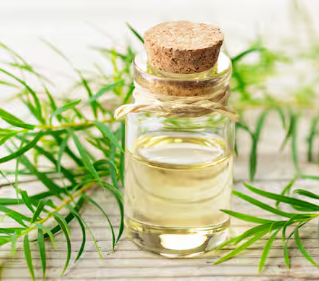Essential Oils You Can Use on Skin: Research-Backed Benefits and Applications
Essential oils have gained immense popularity in recent years for their therapeutic properties, particularly in skincare. These natural extracts not only offer delightful fragrances but also possess properties that can benefit the skin. In this article, we will explore several essential oils that research has shown to be beneficial for skin health, discussing their properties, uses, and the scientific studies supporting their effectiveness.
1. Lavender Essential Oil
Benefits for the Skin
Lavender oil is renowned for its calming effects, but it also has significant benefits for the skin. It possesses anti-inflammatory, antimicrobial, and antioxidant properties, making it suitable for various skin conditions, including acne, eczema, and skin irritation.
Research
A study published in 2002 investigated the antimicrobial effects of lavender oil. The researchers found that lavender oil exhibited potent activity against several bacteria, including Staphylococcus aureus, which is known to cause skin infections. The study concluded that lavender oil could be a useful therapeutic agent for skin infections caused by pathogenic bacteria.
Study Details:
Reference:Cavanagh HM, Wilkinson JM. Biological activities of lavender essential oil. Phytother Res. 2002 Jun;16(4):301-8. doi: 10.1002/ptr.1103. PMID: 12112282.
Findings: Lavender oil showed significant antibacterial activity, supporting its use for skin health.
Application
To use lavender oil on the skin, dilute it with a carrier oil, such as jojoba or coconut oil, and apply it to problematic areas. It can also be added to lotions or creams for additional benefits. Using a homemade roller bottle is an easy way to apply this.
2. Tea Tree Essential Oil
Benefits for the Skin
Tea tree oil is one of the most researched essential oils for skin health. It is celebrated for its antimicrobial, anti-inflammatory, and antifungal properties, making it particularly effective against acne and fungal infections.
Research
A randomized controlled trial published in the Medical Journal of Australia (1990) compared the efficacy of tea tree oil with benzoyl peroxide in the treatment of acne. The study found that while both treatments were effective, tea tree oil had fewer side effects, making it a favorable alternative for acne management.
Study Details:
Reference: Bassett IB, Pannowitz DL, Barnetson RS. A comparative study of tea-tree oil versus benzoylperoxide in the treatment of acne. Med J Aust. 1990 Oct 15;153(8):455-8. doi: 10.5694/j.1326-5377.1990.tb126150.x. PMID: 2145499.
Findings: Both tea tree oil and benzoyl peroxide were effective in reducing acne lesions, but tea tree oil had fewer side effects than benzoyl peroxide.
Application
Tea tree oil should always be diluted before applying it to the skin. Mix a few drops with a carrier oil or your favorite moisturizer, and apply it directly to the affected areas. Using a homemade roller bottle is an easy way to apply this.
3. Frankincense Essential Oil
Benefits for the Skin
Frankincense oil, derived from the resin of the Boswellia tree, is celebrated for its anti-inflammatory, astringent, and regenerative properties. It is especially beneficial for mature skin, helping to reduce the appearance of scars, stretch marks, and fine lines. Its ability to promote cellular regeneration makes it a sought-after ingredient in anti-aging skincare products.
Research
A study published in 2025 investigated the effects of frankincense oil on human skin cells. The researchers found that frankincense oil could significantly stimulate the proliferation of fibroblasts, cells essential for skin repair and regeneration, and reduce inflammation.
Study Details:
Reference: Venkatesan K, Sivadasan D, Abderrahmen Al Weslati M, Gayasuddin Mouid M, Goyal M, Bansal M, Salama MEM, Azizullah Ghori S, Ahmad F. Protective Effects of Frankincense Oil on Wound Healing: Downregulating Caspase-3 Expression to Facilitate the Transition from the Inflammatory to Proliferative Phase. Pharmaceuticals (Basel). 2025 Mar 13;18(3):407. doi: 10.3390/ph18030407. PMID: 40143183; PMCID: PMC11945088.
Findings: Frankincense oil promoted fibroblast proliferation and exhibited anti-inflammatory effects, supporting its use in enhancing skin health and facilitating wound healing.
Application
Frankincense oil can be mixed with a carrier oil, such as jojoba or coconut oil, and applied directly to the skin. It can also be incorporated into creams or serums to boost skin regeneration and reduce signs of aging. A patch test is recommended to check for any adverse reactions before widespread use. Using a homemade roller bottle is an easy way to apply this.
4. Chamomile Essential Oil
Benefits for the Skin
Chamomile oil is well-known for its soothing properties, making it ideal for sensitive or irritated skin. Its anti-inflammatory and calming effects can help relieve conditions like eczema and rosacea.
Research
A study published in Phytotherapy Research (2010) demonstrated that chamomile oil could effectively reduce skin inflammation and irritation. The researchers found that chamomile showed significant anti-inflammatory effects comparable to hydrocortisone.
Study Details:
Reference: Srivastava JK, Shankar E, Gupta S. Chamomile: A herbal medicine of the past with bright future. Mol Med Rep. 2010 Nov 1;3(6):895-901. doi: 10.3892/mmr.2010.377. PMID: 21132119; PMCID: PMC2995283.
Findings: Chamomile oil provided significant anti-inflammatory benefits, supporting its use in skincare.
Application
Chamomile oil can be added to lotions, creams, or diluted with a carrier oil and applied directly to inflamed skin for relief. Using a homemade roller bottle is an easy way to apply this.
5. Geranium Essential Oil
Benefits for the Skin
Geranium oil is known for its balancing properties, making it beneficial for oily and dry skin types alike. It has antibacterial and anti-inflammatory properties, aiding in the treatment of acne and promoting skin healing.
Research
A study published in 2024 evaluated geranium oil's antimicrobial activity. The findings indicated that geranium oil exhibited significant activity against multiple strains of bacteria, supporting its use in acne treatment.
Study Details:
Reference: Santos FND, Fonseca LM, Jansen-Alves C, Crizel RL, Pires JB, Kroning IS, de Souza JF, Fajardo AR, Lopes GV, Dias ARG, Zavareze EDR. Antimicrobial activity of geranium (Pelargonium graveolens) essential oil and its encapsulation in carioca bean starch ultrafine fibers by electrospinning. Int J Biol Macromol. 2024 Apr;265(Pt 1):130953. doi: 10.1016/j.ijbiomac.2024.130953. Epub 2024 Mar 16. PMID: 38499124.
Findings: Geranium oil was effective against bacteria associated with acne, highlighting its potential in skincare.
Application
Dilute geranium oil with a carrier oil and apply it to the skin or include it in your daily moisturizer for balanced skin. Using a homemade roller bottle is an easy way to apply this.
6. Rose Essential Oil
Benefits for the Skin
Rose oil is celebrated for its hydrating and anti-aging properties. It is an excellent choice for dry or mature skin, as it helps to improve skin elasticity and reduce the appearance of wrinkles.
Research
A study published in the International Journal of Molecular Sciences (2018) investigated the effects of rose oil on skin cells. The researchers found that rose oil could enhance moisture levels and reduce inflammation in the skin.
Study Details:
Reference: Charoimek N, Sunanta P, Tangpao T, Suksathan R, Chanmahasathien W, Sirilun S, Hua KF, Chung HH, Sommano SR, Junmahasathien T. Pharmaceutical Potential Evaluation of Damask Rose By-Products from Volatile Oil Extraction. Plants (Basel). 2024 Jun 9;13(12):1605. doi: 10.3390/plants13121605. PMID: 38931037; PMCID: PMC11207781.
Findings: Rose oil improved hydration and reduced inflammation, supporting its use in anti-aging skincare products.
Application
Rose oil can be diluted with a carrier oil and used as a facial oil or added to creams and lotions for enhanced hydration. Using a homemade roller bottle is an easy way to apply this.
7. Peppermint Essential Oil
Benefits for the Skin
Peppermint oil is known for its cooling and refreshing effects. It has antimicrobial properties that can help soothe itching and irritation, making it beneficial for conditions such as acne and psoriasis.
Research
A study published in 2002 examined the antimicrobial activity of peppermint essential oil against various pathogenic bacteria. The findings indicated that peppermint oil could inhibit the growth of bacteria associated with skin infections.
Study Details:
Reference: Işcan G, Kirimer N, Kürkcüoğlu M, Başer KH, Demirci F. Antimicrobial screening of Mentha piperita essential oils. J Agric Food Chem. 2002 Jul 3;50(14):3943-6. doi: 10.1021/jf011476k. PMID: 12083863.
Findings: Peppermint oil exhibited significant antibacterial activity, supporting its use in skincare.
Application
To use peppermint oil, dilute it with a carrier oil and apply it to irritated areas for a cooling effect. Using a homemade roller bottle is an easy way to apply this.
Conclusion
Essential oils can be powerful allies in skincare when used correctly and supported by research. The essential oils discussed in this article—lavender, tea tree, frankincense, chamomile, geranium, rose, and peppermint—have all been shown through scientific studies to provide significant benefits for skin health.
As with any skincare product, it’s crucial to perform a patch test before using essential oils to ensure you do not have an allergic reaction. Additionally, always dilute essential oils with a carrier oil to avoid irritation and maximize their benefits. When included in your skincare routine, these essential oils can contribute to healthier, more radiant skin.







